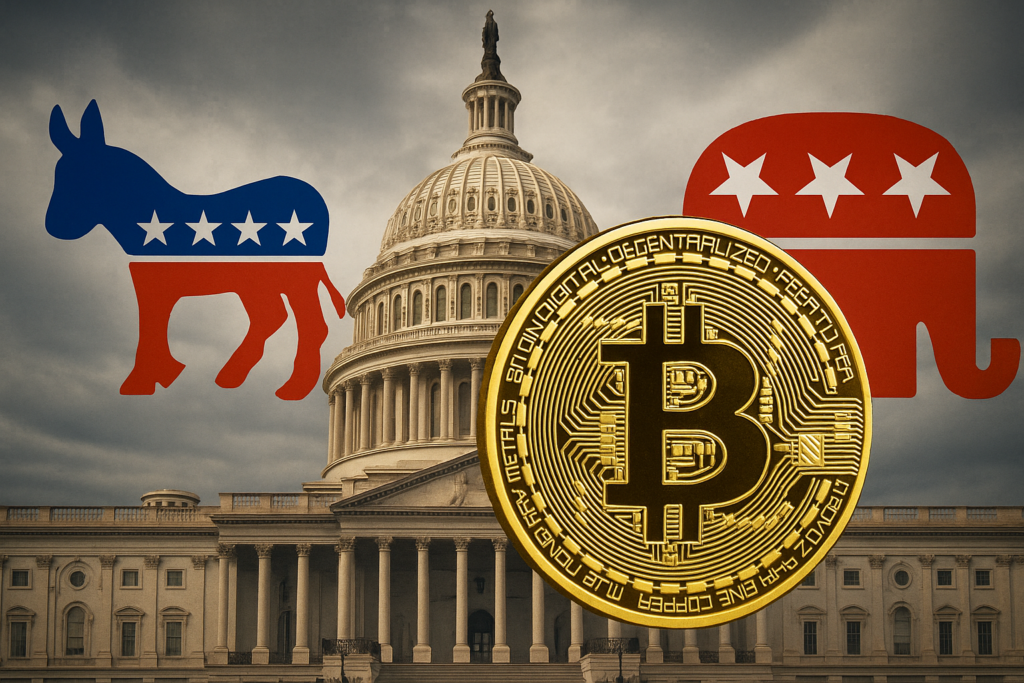The Crypto Market Structure Bill Delay has become one of the most discussed topics in Washington after Democrats’ recent election wins. This power shift in Congress could stall Trump’s pro-crypto policies, reshaping the direction of U.S. digital asset regulation in 2025 and beyond.
Table of Contents
🗳️ 1. What the Election Means for Crypto
Democrats’ victories in key states have strengthened their influence over Congressional committees. This reduces the likelihood of quick passage for the Crypto Market Structure Bill, originally supported by Trump’s administration and Republican allies.
“Every additional seat Democrats win tightens the window for passing pro-crypto reforms,” noted a Bloomberg policy analyst.
Republicans, now facing stronger opposition, are expected to rework portions of the bill to gain bipartisan support.
📘 2. Understanding the Crypto Market Structure Bill
At its core, the Crypto Market Structure Bill aims to clarify how the SEC and CFTC divide oversight of digital assets. This clarity could unlock billions in institutional investments and establish legal definitions for stablecoins, utility tokens, and crypto exchanges.
Without it, the U.S. crypto ecosystem remains uncertain, hindering innovation and pushing startups toward more favorable jurisdictions like Dubai or Singapore.
For in-depth background, check out CoinDesk’s Policy Hub.
⚖️ 3. Why the Bill Faces Political Resistance
Democrats argue that the crypto sector still lacks sufficient consumer protection. High-profile collapses such as FTX, BlockFi, and Celsius have fueled calls for tighter oversight.
Senator Elizabeth Warren continues to champion anti-money-laundering (AML) measures targeting decentralized finance (DeFi) protocols and privacy coins.
Meanwhile, industry leaders fear that these restrictions could cripple innovation, pushing blockchain development offshore.

📉 4. Market Reactions and Expert Opinions
Since election night, Bitcoin and Ethereum prices have traded sideways, reflecting uncertainty in policy direction. Analysts believe the Crypto Market Structure Bill Delay creates a short-term chill but won’t stop long-term growth.
“Regulation is needed, but clarity is key,” said Matt Hougan, CIO of Bitwise. “The delay doesn’t erase demand for crypto — it only slows institutional adoption.”
For live crypto data, visit CoinMarketCap or The Block.
🔮 5. What’s Ahead for U.S. Crypto Policy
Even with the Crypto Market Structure Bill Delay, bipartisan talks are ongoing. The Blockchain Association is lobbying for compromise legislation that promotes innovation while addressing consumer risks.
If a revised draft emerges in early 2026, it could restore investor confidence and signal a new chapter in American crypto policy.
For a historical view, explore our internal post on Trump’s Pro-Crypto Agenda Explained and Understanding Bitcoin Regulation in the U.S..
🧭 Conclusion: The Delay That Could Define the Future
The Crypto Market Structure Bill Delay isn’t just a temporary political setback — it’s a reflection of how divided Washington remains over crypto’s future. As both parties wrestle with control, investors and innovators must adapt to slower progress and uncertain timelines.
Despite the delay, the long-term case for crypto adoption remains bullish, especially if 2026 brings renewed legislative focus.
Read more
